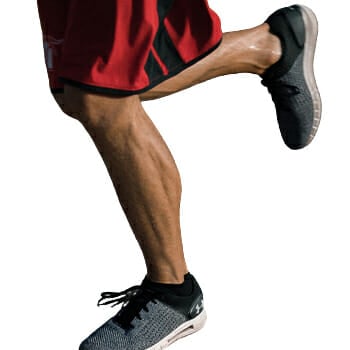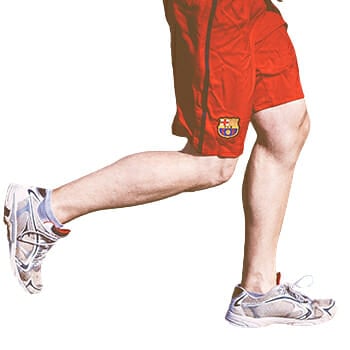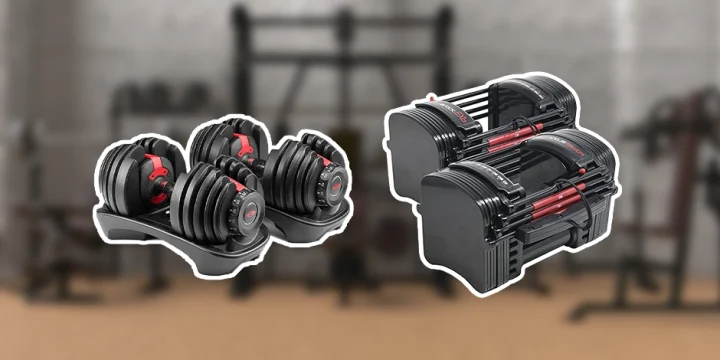In my years of coaching, I've guided athletes through both jogging and sprinting—two distinct running methods with unique benefits.
Both have their place as workout exercises; the question is, which one should you pick?
To help you make a decision, we’ve spent hours examining the effects of jogging vs. sprinting, as well as the pros and cons of each. Read on to find out which one is for you.
Quick Summary
- To choose between jogging and sprinting for your workout, consider each exercise's intensity, effects on muscle types, and your fitness goals.
- Jogging involves steady, low-intensity movement activating slow-twitch muscle fibers, while sprinting is high-intensity and stimulates fast-twitch muscle fibers.
- A Clinical Biomechanics journal study reveals that in jogging, the vertical ground reaction force increases linearly up to 2.5 bodyweights at 6.0 m/s, while in sprinting, this force remains constant at higher speeds.
- As a seasoned coach, my experience suggests that jogging offers a universal workout suitable for various fitness levels, whereas sprinting caters more to those aiming for intensive muscle conditioning and explosive strength.
What is the Difference Between Jogging and Sprinting?

Both jogging and sprinting provide many cardiovascular benefits. Jogging is a low-intensity cardio workout, whereas sprinting is a high-intensity exercise.
According to Sports Medicine, jogging is a form of running at a slow, steady pace and is typically used as a warm-up for more strenuous running. Sprinting, on the other hand, is running at top speed, as fast as possible, for a short distance [1].
In my training sessions, I've observed that sprinting, as an anaerobic activity, demands more from the body, making it more exhausting than the aerobic nature of jogging.
Based on my coaching, the main differences between jogging and sprinting are:
Pace

- Jogging involves running at a comfortable speed that is maintained over the majority of the run. It is less taxing on the body as it does not require as high an energy output. During jogging, the vertical ground reaction force (F(z)) increases linearly up to approximately 2.5 bodyweights (BW) at 6.0 m/s.
- A sprint workout is about running as quickly as possible. This exercise forces the body to exert maximum effort and energy to cover a maximum distance in minimal time. During sprinting, F(z) remains constant at higher speeds, based on a Clinical Biomechanics journal study [2].
Due to the high speed and the large amount of effort required, sprint workouts are often divided into interval training to give the runner time to rest.
Distance

- Jogging involves trekking over great distances, from kilometres to miles
- Sprinting covers only hundreds of meters.
At the Olympic level, marathons (26.2 miles) and half-marathons (13 miles) are good examples of jogging, whereas the 100m, 200m, and 400m dash are examples of professional sprints on the track.
Technique

- Jogging prioritizes stamina over speed and power.
Maintaining a constant pace over a long distance allows your muscles to become accustomed to the movements and stress applied.
That helps the runner develop endurance and stamina.
In jogging, calf muscles contract eccentrically.
- Sprinting workouts prioritize the exact opposite by inducing the muscles to rapidly lengthen and contract.
That helps the runner develop speed and power in their lower body, as well as build muscle size and strength.
During sprinting, calf muscles contract concentrically at initial floor contact.
Which Exercise Is Better?
Jogging and sprinting target the same muscle groups in the lower body but with different intensities.
Each exercise has its own pros and cons that impact physical fitness, body composition, and general body health.
Jogging Workouts

Jogging is a low-impact cardiovascular workout suitable for anyone, regardless of their athletic capabilities.
Start slowly by setting a moderate pace and distance, gradually increasing over time for the best results.
Based on my extensive coaching, here are some sprinting tips:
- Start with 10–15 minutes of stretching to warm up.
- Pacing yourself is important for success. Using a smartphone or stopwatch can help you track your speed, distance, and even the number of calories you burn.
- Having a jogging partner or group can help you stay motivated and push you beyond your limits.
- Improves heart health
- Burns calories and helps you lose weight
- Promotes muscular endurance
- Strengthens leg muscles
- Acts as a warm-up for other exercises
- Develops joint and bone strength
- Boosts your mood and minimizes mental health issues like depression
- May eventually hit a training plateau once the body gets used to long-distance running
Sprinting Workouts

Tips:
- Start with a 10-minute warm-up via jogging or stretching to prevent injury.
- Split the exercise into varying sets as interval training. For example, for the first set, sprint 50 meters at max speed, 100 meters at 75% effort for the second, and 200 meters at half speed for the third.
- The best way to recover after a sprint is to gradually lower your running speed until you are walking. That helps the muscles slowly relax and cool off instead of abruptly causing them to stop
- Burns fat and more calories than jogging due to the intensity of the exercise
- Tones muscles
- Increases speed and overall body athletic performance
- Promotes cardiovascular health
- Improves lower body power and explosiveness
- Sprint training is suitable for older audiences (knee and joint pain or related issues), or individuals with heart complications
Sprinting vs. Jogging: An in-Depth Comparison
Both long-distance jogging and sprinting workouts are effective exercises you can incorporate into your workout routine.
Below is a head-to-head comparison of the exercises and how they impact the body.
Heart Health

Both sprinting and jogging boost heart health by regulating blood pressure and cholesterol. Jogging, however, with its steady, long-distance pace, is better for cardiovascular wellness, as it strengthens the heart and improves blood flow.
Muscle Mass

Jogging works slow-twitch muscle fibers, suitable for extended aerobic activity and stamina, while sprinting engages fast-twitch fibers, ideal for strength, power, and muscle building.
Sprinting is your go-to for increasing muscle mass, as it targets these larger, more powerful fibers.
Weight Loss

From a coach's viewpoint, while both jogging and sprinting burn fat, sprinting accelerates this due to its higher intensity and the significant role of EPOC (excess post-exercise oxygen consumption) in burning calories post-workout.
For beginners, start with jogging to build up to the demanding nature of sprinting.
Mood Control and Mental Health

Running, particularly jogging, is effective in enhancing mental well-being by releasing endorphins that reduce stress and improve mood. It's especially beneficial for managing anxiety and depression.
According to a study from The Primary Care Companion Journal:
“Exercise improves mental health by reducing anxiety, depression, and negative mood and by improving self-esteem and cognitive function. Exercise has also been found to alleviate symptoms such as low self-esteem and social withdrawal [3].”
- Ashish Sharma, Medical Researcher
Related Articles:
Core Strength

Running is excellent for toning the waistline and building core strength. Sprinting, with its explosive nature, targets abdominal fat effectively, while jogging enhances muscular endurance and stamina, which are beneficial for prolonged physical activities.
Strength Training

In my training programs, I emphasize how jogging and sprinting differently strengthen the lower body.
Sprinting boosts muscle strength in key areas like the glutes, hamstrings, and calves, while jogging enhances bone and joint strength, improving overall joint stability.
FAQs
Who Should Not Sprint or Jog?
Individuals with heart conditions should limit intense cardio activity like sprinting and jogging. Additionally, pregnant women, as well as older people, should avoid sprinting to prevent complications.
How Often Should You Sprint or Jog?
If your purpose is athletic performance, running five days a week is optimal. Otherwise, three to four alternate days are enough to help you stay fit and lose weight.
Is It Better To Run Indoors or Outdoors?
Running indoors is preferable for days where the weather is too extreme or you’re feeling lazy.
If you’re looking for a challenge, outdoors is a better choice, as it exposes you to more challenges such as wind resistance, weather, and rough terrain. It’s also much more enjoyable, as you aren’t confined to running at a set pace and have the freedom to speed up or slow down as you like.
References:
- https://www.ncbi.nlm.nih.gov/pmc/articles/PMC6872694/
- https://pubmed.ncbi.nlm.nih.gov/11415629/
- https://www.ncbi.nlm.nih.gov/pmc/articles/PMC1470658/
About The Author
You May Also Like






